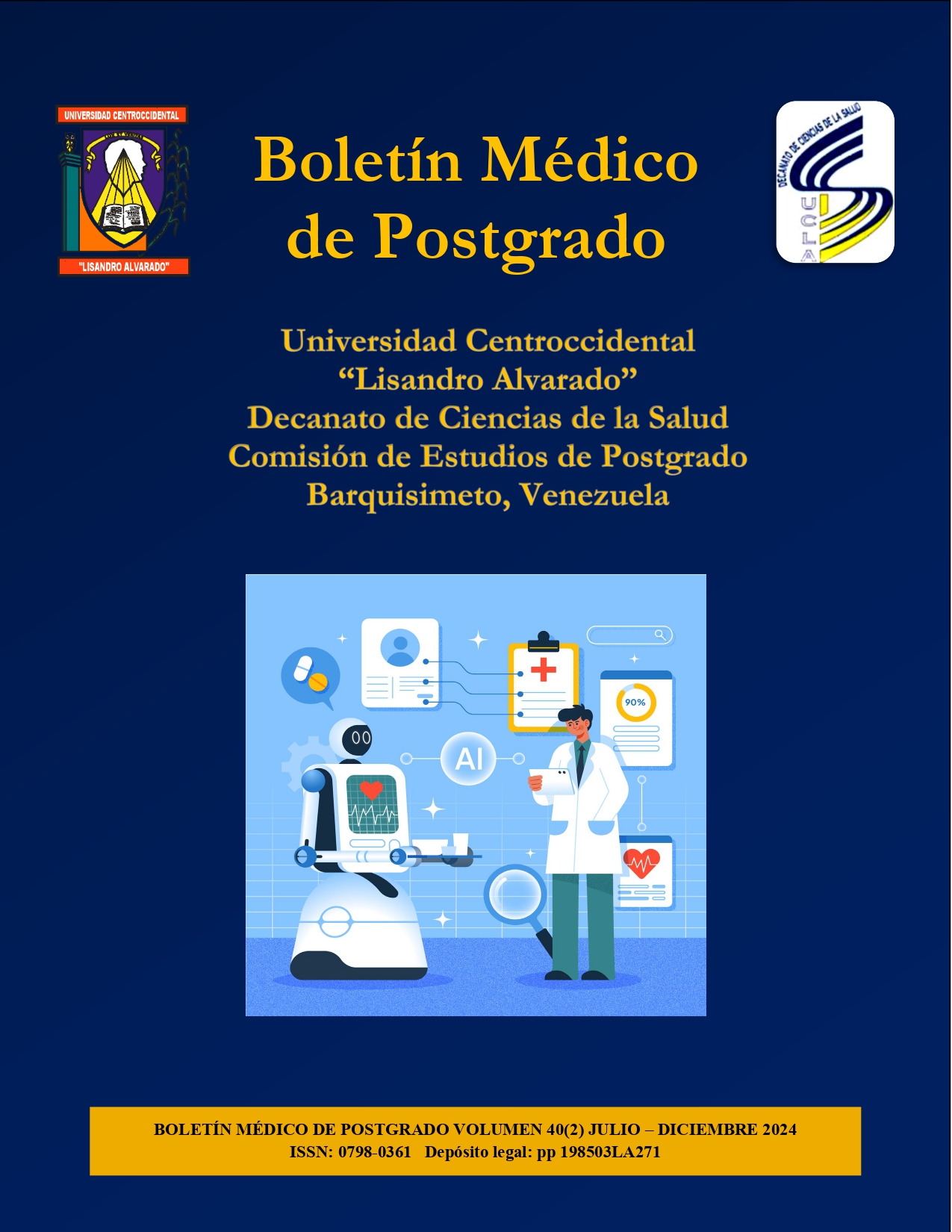Poligrafía respiratoria y monitoreo ambulatorio de presión arterial en pacientes hipertensos. Centro Cardiovascular Regional Centroccidental
Resumen
La hipertensión arterial sistémica (HTA) es una enfermedad crónica causante de diversas complicaciones cardiovasculares. Los pacientes hipertensos pueden ser clasificados según el patrón circadiano de presión arterial mediante el monitoreo ambulatorio de presión arterial (MAPA). El objetivo de esta investigación fue determinar los hallazgos de la poligrafía respiratoria y el patrón circadiano de presión arterial de pacientes hipertensos que acudieron a la Unidad de Hipertensión Arterial del Centro Cardiovascular Regional Centro Occidental (ASCARDIO). Los pacientes con diagnóstico de HTA tenían una edad promedio de 54 años, 53% del sexo femenino, con un IMC promedio de 28.25 kg/m2 y no fumadores (64%); 57% de los pacientes presentaron el diagnóstico de SAHOS (41% leve, 29% moderado/severo, respectivamente). 70% de los pacientes presentaron una saturación mínima de oxígeno < 85%. El patrón no dipper se observó por igual en los pacientes con SAHOS moderada y severa y fue menos frecuente en pacientes con SAHOS leve. El patrón dipper fue mucho más frecuente en los pacientes con SAHOS leve mientras que la presentación del patrón Riser fue independiente del grado de severidad del SAHOS. El patrón dipper extremo sólo se observó en pacientes con SAHOS severo.
Descargas
Citas
Organización Mundial de la Salud. (2021). Hipertensión. Recuperado de https://www.who.int/es/news-room/fact-sheets/detail/hypertension
Williams B, Mancia G, Spiering W, Agabiti E, Azizi M, Burnier M, et al. Guía ESC/ESH sobre el diagnóstico y tratamiento de la hipertensión. Rev Esp Cardiol 2019; 72(2): e1-e78.
Hickey KA, Rubanyi G, Paul RJ, Highsmith, RF. Characterization of a coronary vasoconstrictor produced by cultured endothelial cells. American Journal of Physiology-Cell Physiology 1985; 248(5): C550–C556.
Vanegas D, Franco P, Merchan A. (2019). Hipertensión y apnea del sueño. Grupo de Trabajo de Apnea del Sueño Sociedad Colombiana de Cardiología y Cirugía Cardiovascular y Fundarritmia-Fundación Cardiovascular.
Durán J, Puertas F, Pin G, Santa María J, Grupo Español de Sueño. Documento de consenso nacional sobre el síndrome de apneas-hipopneas del sueño. Arch Bronconeumol 2005; 41: 1–110.
González J, González D, Guzmán C, Odusola S. Apnea obstructiva del sueño e hipertensión arterial. Las evidencias de su relación. Revista Médica del Instituto Mexicano del Seguro Social 2016; 54(3): 339-343.
Epstein L, Kristo D, Strollo P, Friedman N, Malhotra A, Patil S, et al. Adult Obstructive Sleep Apnea Task Force of the American Academy of Sleep Medicine. Clinical guideline for the evaluation, management and long-term care of obstructive sleep apnea in adults. J Clin Sleep Med 2009; 5: 263-76.
Hidalgo P, Lobelo R. Epidemiología mundial, latinoamericana y colombiana y mortalidad del síndrome de apnea-hipopnea obstructiva del sueño (SAHOS). Rev. Fac. Med. 2017; 65: S17-20.
Saeed S, Romarheim A, Mancia G, Saxvig IW, Gulati S, Lehmann S, et al. Characteristics of Hypertension and Arterial Stiffness in Obstructive Sleep Apnea: a Scandinavian Experience from a Prospective Study of 6408 Normotensive and Hypertensive Patients. J Clin Hypertens (Greenwich) 2022; 24(4): 385-394.
Anping C, Yingling Zhou Y, Zhang J, Zhong O, Wang R, Wang L. (2017). Características epidemiológicas y diferencias específicas de género de la apnea obstructiva del sueño en una población china hipertensa: un estudio transversal. BMC 2017; 17(1): 8.
Morinaga Y, Matsumura K, Kansui Y, Sakata S, Goto K, Haga Y, et al. Impacto de la apnea obstructiva del sueño sobre la presión arterial y los factores de riesgo cardiovascular en hombres japoneses: un estudio transversal en un grupo de trabajo. Clin Exp Hipertensos 2018; 40(1): 73-78.
Alonso M, Terán J, Cordero J, González M, Rodríguez L, Viejo J, et al. Confiabilidad de la poligrafía respiratoria domiciliaria para el diagnóstico del síndrome de apnea-hipopnea del sueño: análisis de costos. Arco Bronconeumol 2008; 44(1): 22-8.
BaHammam AS, Alshahrani M, Aleissi SA, Olaish AH, Alhassoon MH, Shukr A. Blood pressure dipping during REM and non-REM sleep in patients with moderate to severe obstructive sleep apnea. Sci Rep 2021; 11(1): 7990.
Crinion S, Ryan S, Kleinerova J, Kent B, Gallagher J, Ledwidge M, et al. La presión arterial nocturna sin descenso predice la apnea del sueño en pacientes con hipertensión. J Clin Sueño Med 2019; 15(7): 957–96.
Publicado
Cómo citar
Número
Sección

Está obra está bajo licencia Creative Commons Attribution-NonCommercial-ShareAlike 4.0 International License.
Las opiniones expresadas por los autores no necesariamente reflejan la postura del editor de la publicación ni de la UCLA. Se autoriza la reproducción total o parcial de los textos aquí publicados, siempre y cuando se cite la fuente completa y la dirección electrónica de esta revista. Los autores(as) tienen el derecho de utilizar sus artículos para cualquier propósito siempre y cuando se realice sin fines de lucro. Los autores(as) pueden publicar en internet o cualquier otro medio la versión final aprobada de su trabajo, luego que esta ha sido publicada en esta revista.



